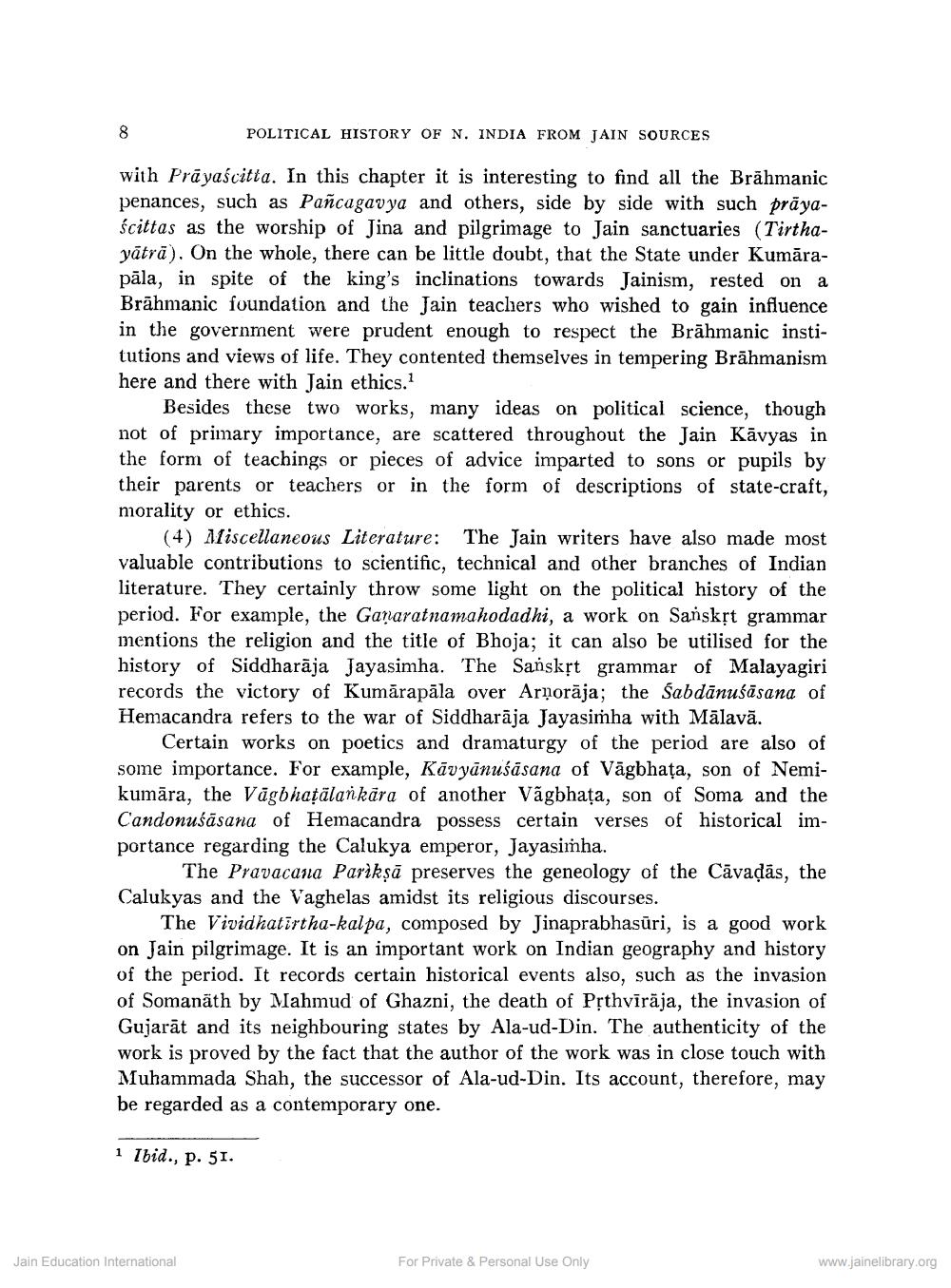________________
POLITICAL HISTORY OF N. INDIA FROM JAIN SOURCES
with Prāyaścitta. In this chapter it is interesting to find all the Brāhmanic penances, such as Pañcagavya and others, side by side with such prāyaŚcittas as the worship of Jina and pilgrimage to Jain sanctuaries (Tirthayātrā). On the whole, there can be little doubt, that the State under Kumārapāla, in spite of the king's inclinations towards Jainism, rested on a Brāhmanic foundation and the Jain teachers who wished to gain influence in the government were prudent enough to respect the Brāhmanic institutions and views of life. They contented themselves in tempering Brāhmanism here and there with Jain ethics.
Besides these two works, many ideas on political science, though not of primary importance, are scattered throughout the Jain Kāvyas in the form of teachings or pieces of advice imparted to sons or pupils by their parents or teachers or in the form of descriptions of state-craft, morality or ethics.
(4) Miscellaneous Literature: The Jain writers have also made most valuable contributions to scientific, technical and other branches of Indian literature. They certainly throw some light on the political history of the period. For example, the Ganaratnamahodadhi, a work on Sanskệt grammar mentions the religion and the title of Bhoja; it can also be utilised for the history of Siddharāja Jayasimha. The Sanskặt grammar of Malayagiri records the victory of Kumārapāla over Arnorāja; the Sabdānusāsana of Hemacandra refers to the war of Siddharāja Jayasimha with Mālavā.
Certain works on poetics and dramaturgy of the period are also of some importance. For example, Kavyānuśāsana of Vägbhața, son of Nemikumāra, the Vägbhațälankára of another Vãgbhata, son of Soma and the Candonušāsana of Hemacandra possess certain verses of historical importance regarding the Calukya emperor, Jayasimha.
The Pravacana Parikṣā preserves the geneology of the Cāvaļās, the Calukyas and the Vaghelas amidst its religious discourses.
The Vividhatirtha-kalpa, composed by Jinaprabhasūri, is a good work on Jain pilgrimage. It is an important work on Indian geography and history of the period. It records certain historical events also, such as the invasion of Somanāth by Mahmud of Ghazni, the death of Pșthvīrāja, the invasion of Gujarāt and its neighbouring states by Ala-ud-Din. The authenticity of the work is proved by the fact that the author of the work was in close touch with Muhammada Shah, the successor of Ala-ud-Din. Its account, therefore, may be regarded as a contemporary one.
1 Ibid., p. 51.
Jain Education International
For Private & Personal Use Only
www.jainelibrary.org




